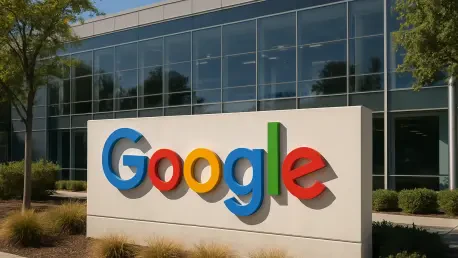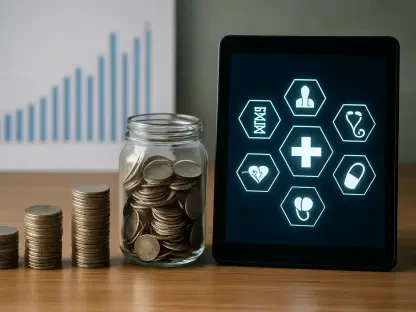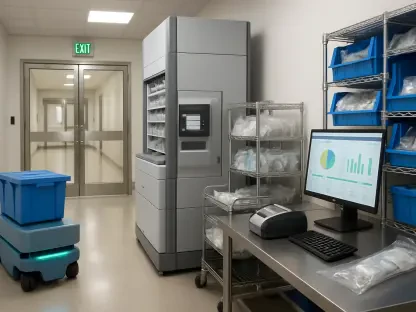In an era where wearable technology has become a cornerstone of personal health management, a groundbreaking development has emerged that promises to redefine how sensor data is interpreted and utilized. Imagine a smartwatch that not only tracks heart rate or steps but also explains why those metrics spike or dip—whether due to an intense workout or a stressful moment. This is the vision behind a newly introduced technology from a leading tech giant, designed to transform raw data from devices like fitness trackers into meaningful, contextual health insights. By delving deeper into the nuances of human physiology and activity, this innovation aims to bridge the gap between mere numbers and actionable understanding. Such advancements signal a shift toward more intuitive and personalized health monitoring, setting a new standard for wearable devices. As the digital health landscape continues to evolve, this technology stands poised to empower users with a clearer picture of their well-being, paving the way for smarter lifestyle choices.
Revolutionizing Wearable Data Interpretation
The core of this cutting-edge technology lies in its ability to analyze multimodal sensor signals from wearables like smartwatches, going beyond basic metrics to provide a richer understanding of user health. Named SensorLM, this set of foundation models deciphers complex data patterns to offer explanations for physiological readings. For instance, a heart rate of 150 beats per minute could be contextualized as the result of a challenging uphill run or an anxiety-inducing presentation. This contextual analysis marks a significant leap from traditional sensor outputs, which often leave users guessing about the reasons behind their data. By integrating sophisticated algorithms, SensorLM ensures that the information delivered is not just accurate but also relevant to the user’s specific circumstances. This approach helps individuals make informed decisions about their health and activities, whether adjusting exercise routines or managing stress. The potential to transform vague data into precise insights positions this technology as a game-changer in personal wellness tools.
Moreover, the development process behind SensorLM reflects an unprecedented commitment to scale and diversity in data collection. Drawing from an extensive dataset of nearly 60 million hours of multimodal sensory input from over 100,000 participants across 127 countries, the model has been trained to handle a vast array of human experiences. This data, collected with user consent over a focused period earlier this year, ensures that the technology accounts for varied lifestyles and health profiles. Advanced techniques such as contrastive learning and generative pre-training allow SensorLM to pair sensor signals with descriptive text, autonomously generating captions that explain trends and events. This capability not only enhances the accuracy of health feedback but also tailors it to individual contexts, making the output far more actionable. As a result, users gain access to a level of detail previously unattainable in consumer wearables, setting a new benchmark for how technology can support health monitoring on a global scale.
Advancing Activity Recognition and Future Applications
One of the standout features of SensorLM is its remarkable precision in identifying and categorizing human activities, a capability that outshines general-purpose language models. Whether recognizing a leisurely long walk or distinguishing between a cardio session and strength training, the model produces detailed, hierarchical captions that reflect the context of each activity. Experimental results have demonstrated the coherence and factual accuracy of these outputs, highlighting the specialized design tailored for wearable sensor data. This precision is not static; the technology shows consistent improvement as more data is fed into the system, suggesting strong scalability for future enhancements. Such adaptability ensures that SensorLM can evolve with user needs, potentially covering an even broader spectrum of activities and health metrics. This focus on refined activity recognition empowers users to better understand their daily patterns, fostering a deeper connection between technology and personal health management.
Looking toward the horizon, the vision for SensorLM extends into pioneering domains like metabolic health and in-depth sleep analysis, areas often plagued by inconsistent consumer data. The goal is to refine these complex datasets into personalized insights that users can act upon, whether through lifestyle adjustments or clinical interventions. Envisioned as a cornerstone for next-generation digital health coaches and wellness applications, SensorLM could enable natural language interactions, allowing users to query their data and receive tailored advice. This forward-thinking approach aligns with broader industry trends of integrating artificial intelligence into health-focused wearables, as seen in recent advancements like AI-driven emergency detection features in smartwatches. By pushing the boundaries of what wearable technology can achieve, SensorLM promises to deliver tools that are not just reactive but proactive in supporting user well-being, heralding a future where health management is both intuitive and deeply personalized.
Reflecting on a Milestone in Health Tech
As the journey of SensorLM unfolded, it became clear that this technology marked a pivotal moment in the evolution of wearable health solutions. Its sophisticated analysis of sensor data brought unprecedented clarity to users, transforming numbers into narratives that explained the intricacies of personal health and activity. The extensive training on diverse, global datasets ensured that the insights were both accurate and inclusive, reflecting a wide range of human experiences. Moving forward, the focus shifted to expanding its reach into untapped health domains, with plans to refine tools for metabolic and sleep analysis. Industry watchers anticipated that such developments would catalyze the creation of advanced digital health coaches, capable of guiding users through natural language interactions. This milestone not only highlighted a commitment to innovation but also laid the groundwork for future tools that could proactively enhance wellness, ensuring that health technology continued to evolve in step with user needs.









